
Within Our Gates is a 1920 American silent film by the director Oscar Micheaux that portrays the contemporary racial situation in the United States during the early twentieth century, the years of Jim Crow, the revival of the Ku Klux Klan, the Great Migration of blacks to cities of the North and Midwest, and the emergence of the "New Negro". It was part of a genre called race films.

Oscar Devereaux Micheaux (; was an American author, film director and independent producer of more than 44 films. Although the short-lived Lincoln Motion Picture Company was the first movie company owned and controlled by black filmmakers, Micheaux is regarded as the first major African-American feature filmmaker, a prominent producer of race films, and has been described as "the most successful African-American filmmaker of the first half of the 20th century". He produced both silent films and sound films.

Body and Soul is a 1925 race film produced, written, directed, and distributed by Oscar Micheaux and starring Paul Robeson in his motion picture debut. In 2019, the film was selected by the Library of Congress for inclusion in the National Film Registry for being "culturally, historically, or aesthetically significant".

Evelyn Preer, was an African American pioneering screen and stage actress, and jazz and blues singer in Hollywood during the late-1910s through the early 1930s. Preer was known within the Black community as "The First Lady of the Screen."

The race film or race movie was a genre of film produced in the United States between about 1915 and the early 1950s, consisting of films produced for black audiences, and featuring black casts. Approximately five hundred race films were produced. Of these, fewer than one hundred remain. Because race films were produced outside the Hollywood studio system, they were largely forgotten by mainstream film historians until they resurfaced in the 1980s on the BET cable network. In their day, race films were very popular among African-American theatergoers. Their influence continues to be felt in cinema and television marketed to African-Americans.
Midnight Ramble is a 1994 documentary about the early history of Black American movies from the period between 1910 and 1950. Known as "race movies", these films, traditionally independent of Hollywood, were made primarily by, for and about the black community. This documentary is a tribute to a film genre that lasted for more than 40 years, produced over 500 movies, and created a foundation for contemporary films from directors such as Spike Lee and Tyler Perry. James Avery narrates this exploration of the early black film industry. There is a mistaken assumption that "race films" began largely in reaction to D. W. Griffith's 1915 The Birth of a Nation. Nothing could be further from the truth. Race movies actually began around 1910 in Chicago in response to the Black Community longing to see themselves reflected on the silver screen via this new medium of film. Wanting to see themselves through their own eyes, on their own terms thus counteracting the Hollywood stereotypes within the American media.

Lawrence Chenault was an American vaudeville performer and silent film actor. He appeared in approximately 24 films between years 1920 and 1934; most of his performances were in films directed by pioneering African-American filmmaker Oscar Micheaux. His brother, Jack Chenault, was also a film actor.
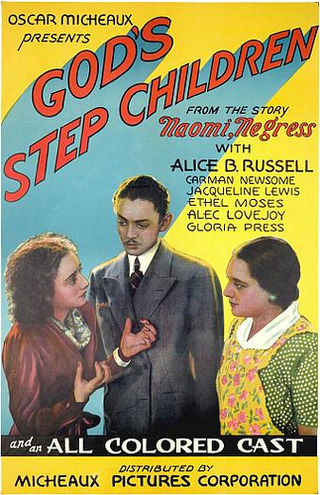
God's Step Children is a 1938 American drama film directed by Oscar Micheaux and starring Jacqueline Lewis. The film is inspired by a combination of elements shared from two previously released Hollywood productions, Imitation of Life and These Three.
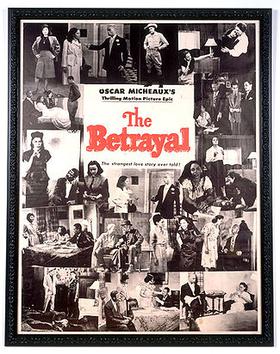
The Betrayal is a 1948 race film written, produced, and directed by Oscar Micheaux. He adapted it from his 1943 novel The Wind From Nowhere.
The Notorious Elinor Lee is a 1940 race film directed, written, and co-produced by the African-American filmmaker Oscar Micheaux.
The Virgin of the Seminole is a 1922 race film directed, written and produced by Oscar Micheaux.
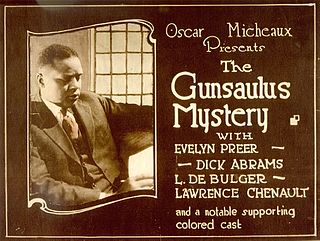
The Gunsaulus Mystery is a 1921 American silent race film directed, produced, and written by Oscar Micheaux. The film was inspired by events and figures in the 1913-1915 trial of Leo Frank for the murder of Mary Phagan. The film is now believed to be lost. Micheaux remade the film 1935 as Murder in Harlem.
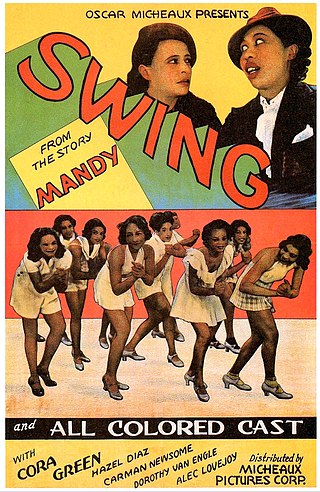
Swing! is a 1938 American race film directed, produced and written by Oscar Micheaux.

A Daughter of the Congo is a 1930 race film directed, written and produced by Oscar Micheaux. The film is loosely based on the novel The American Cavalryman (1917), by African-American novelist and playwright Henry Francis Downing. It is considered a lost film.
The House Behind the Cedars is a 1927 silent race film directed, written, produced and distributed by the noted director Oscar Micheaux. It was loosely adapted from the 1900 novel of the same name by African-American writer Charles W. Chesnutt, who explored issues of race, class and identity in the post-Civil War South. No print of the film is known to exist, and it is considered lost. Micheaux remade the film in 1932 under the title Veiled Aristocrats.

Veiled Aristocrats is a 1932 American Pre-Code race film written, directed, produced and distributed by Oscar Micheaux. The film deals with the theme of "passing" by mixed-race African Americans to avoid racial discrimination. It is a remake of The House Behind the Cedars (1927), based on a novel by the same name published in 1900 by Charles W. Chesnutt. Micheaux may have borrowed the new title from a 1923 novel by Gertrude Sanborn.
Pearl Bowser was an American author, collector, television director, film scholar, film director, producer, filmmaker, independent distributor and film archivist. Along with her peers Mel Roman and Charles Hobson, Bowser researched and curated "The Black Film" retrospective at the Jewish Museum in 1970. This prompted a new wave of public interest into "exhibiting, producing, and engaging with African American cinema beyond borders". Most of her exalted career was spent traveling the globe in order to cultivate audiences for marginalized filmmakers. An example of her efforts, and also her most groundbreaking work, manifested in her research on "early-1900s Black film pioneer Oscar Micheaux". This research can be seen in her book on the first ten years of the career of Oscar Micheaux, an African-American who directed 40 "race pictures" between 1918 and 1940. She is thus credited for having helped rediscover some of Oscar Micheaux's rare surviving films. She is the founder of African Diaspora Images, a collection of visual and oral histories that documents the history of African-American filmmaking. Part of her journey included teaching young people film in the 1960s and 1970s.
The Spider's Web is a 1926 American film directed by Oscar Micheaux which stars Evelyn Preer. It was remade in 1932 as The Girl from Chicago.
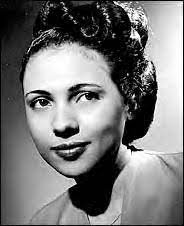
Dorothy Van Engle was an American actress who performed throughout the 1930s. She starred in Oscar Micheaux films, including Murder in Harlem and Swing!. Beautiful and sophisticated, she wore fashionable "updos" in her films.
Pioneers of African-American Cinema (2015) is a digitally restored anthology collection of independent Black cinema from the first half of the 20th century.














